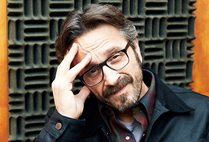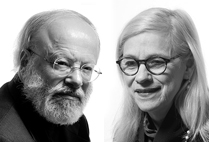For future physician Sandra Valenciano, the School of Medicine was a natural fit—provided she could find a place to live.
“I’ve wanted to be a doctor since I was eight years old,” says Valenciano (MED’14), “so in a sense, I’ve been premed my whole life.”
Valenciano grew up in Florida, she says, “in a lower-income household with little to no access to health care.” Yet she knew from summers spent with family in Colombia that she had it better than many others. “I saw children my age begging for money
or selling trinkets on the streets,” she says, “and then I’d come home and see those charity commercials on TV.”
After working her way through school to earn a bachelor’s in community health and a master’s in public health, Valenciano began the search for a medical school.
“The main reason I picked BU is that I knew I’d get to work with Boston Medical Center’s patient population,” she says. “I was attracted to BMC’s long history of serving low-income and minority underprivileged patients. It felt like the right place.”
Valenciano also felt that she was the kind of person BU would like. “After my master’s, I went to Haiti on a postearthquake medical relief trip,” she says. “We saw about 200 patients a day—sometimes more—for two weeks. I learned a bit of Haitian Creole, which has been helpful up here.”
Once she was accepted to BU, she had one more hurdle: finding a place to live. “It was really hard to find housing,” she says. “I wanted to live near school, but everything was really expensive.” With a lot of research—and a bit of luck—she found affordable graduate housing a decent commute from the Medical Campus. It seemed like everything was settled. Then, the realities of medical school set in.
“Medical students’ schedules are very different,” Valenciano says. “We need quiet hours and more study time, and we have much less free time than most people. Sometimes housemates would be up late, and thin walls made that hard.” She did her best to work around competing schedules, but the tension began to mount.
By her second year at BU, the frustrations of sharing an apartment under these conditions proved too much. “When I was studying for the boards,” she says, “I wound up staying at a friend’s apartment for a month.” This made her realize just how unhappy she had been. “It’d been so long since I’d had a good night’s rest,” she says, “or felt comfortable in my home.”
Then she heard about the MED student residence at 815 Albany St., which opened in August 2012. “I knew it was for first-years,” she says, “and I was waiting to hear if they’d allow third- and fourth-year students to live there, too.”
Phyllis Carr, MED associate dean of students, impressed by Valenciano’s energy and determination as well as her commitment to health care, came to her rescue, offering a residential student advisor role in the new building. “I picked Sandra because I know that she is going to make a difference,” Carr says.
The nine-story building has 104 two-bedroom apartments for BU’s graduate medical school population. MED donor-supported financial aid has reduced market rents to an affordable $850 per month. Valenciano sees firsthand the benefits for the residence’s first-year students. Thanks to the donors and supporters of the residence, she says, “a lot of the stress of starting medical school has been removed. As a new student, you’re already nervous, and now you don’t have to find a place to live on top of everything else.” Potential students have evidently found the benefit attractive: their acceptance rate increased this year, in part because of the student residence.
Valenciano and a friend now share an apartment in the residence, which is near BMC, a critical location for students whose shifts begin too early for buses and trains. “More important,” she says, “everyone in the building is a graduate medical student. You understand when people need to study—you’re all there for the same thing.”













































Related Stories
MED’s Field of Dreams
Garden, recreation space offer students welcome respite
My Own Boston: Charles Lewis
“Work hard, play hard”—special places to find a balance between the two
Joint MD/JD Program Launches in Fall
Students will complete both degrees in six years
Post Your Comment